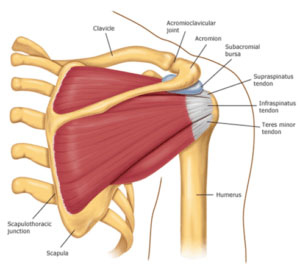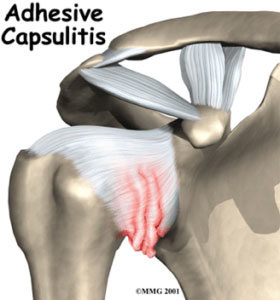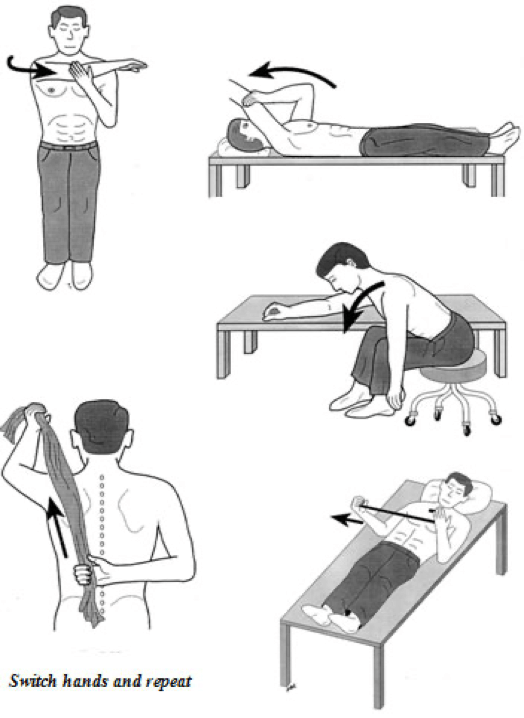
ANATOMY
Your shoulder is made up of three bones: Your upper arm bone (humerus), your shoulder blade (scapula), and your collarbone (clavicle).
Your arm is kept in your shoulder socket by your rotator cuff. These muscles and tendons form a covering around the head of your upper arm bone and attach it to your shoulder blade.
In frozen shoulder, the shoulder capsule thickens and becomes tight. Stiff bands of the tissue called adhesions develop.

The hallmark sign of this condition is being unable to move your shoulder- either on your own or with the help of someone else. It develops in 3 stages:
Freezing– You slowly develop more and more pain. As the pain worsens, your shoulder loses range of motion. Freezing can last 6 weeks to 9 months
Frozen– Painful symptoms may improve during this stage, but stiffness remains. During 4-6 months, daily activities may be very painful
Thawing– Shoulder motion slowly improves during this stage. Complete return to normal strength and motion can take 6 months- 2 years
CAUSES
The causes of frozen shoulder are not fully understood. There is no clear connection to arm dominance or occupation. A few factors may put you more at risk of developing frozen shoulder-
Diabetes- Frozen shoulder occurs more often in people with diabetes, affecting 10-20% of these individuals, for unknown reasons
Other diseases- Additional medical problems associated with frozen shoulder include thyroid disease, Parkinson disease and cardiac disease.
Immobilization- frozen shoulder can develop after a shoulder has been immobilized for a period of time due to surgery, a fracture or other injuries. Having patients move the shoulder after injury/shoulder can help prevent frozen shoulder.
SYMPTOMS
- Pain from frozen shoulder is usually dull and achy. It is typically worse early in the course of the disease and when you move your arm. The pain is usually located over the outer shoulder area and sometimes in the upper arm
TREATMENTS
Non-steroidal anti-inflammatory medicines. Drugs like ibuprofen and naproxen reduce pain and swelling.
Steroid injection. Cortisone is a powerful anti-inflammatory medicine injected directly into the shoulder joint, sometimes with the help of ultrasound.
Physical therapy. Specific exercises will help restore motion. These may be under the supervision of a physical therapist or home exercise program. Therapy includes stretching and range of motion exercises for the shoulder. Sometimes heat is used to loosen up the shoulder before the stretching exercises.






